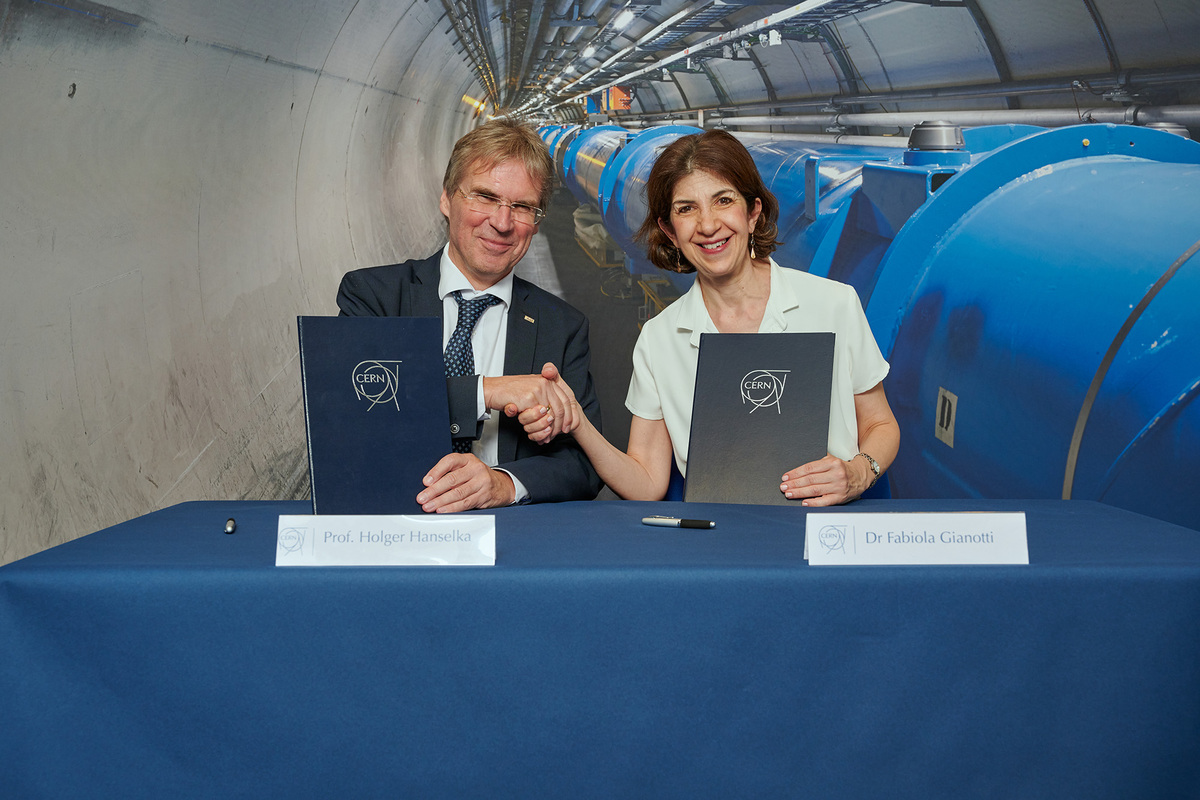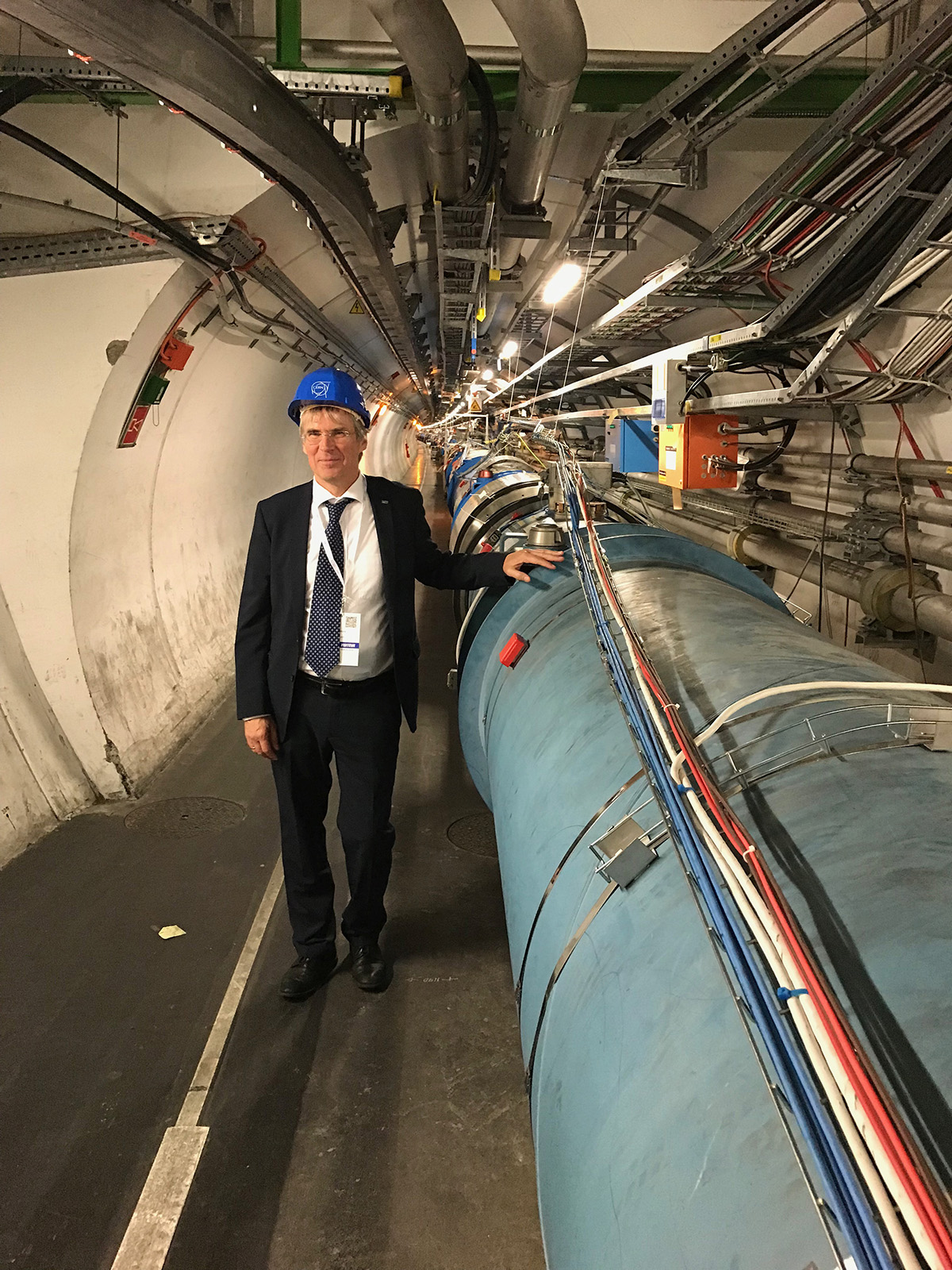KIT and CERN Expand Collaboration on Accelerator Technologies
KIT and CERN announced their intention to cooperate even more closely in advanced accelerator technology. A corresponding "Declaration of Intent" has been signed by CERN Director-General Dr. Fabiola Gianotti and KIT President Professor Holger Hanselka in Geneva today (August 15, 2019). The collaboration is aimed at carrying out joint research, development, and innovation projects for future accelerators and other infrastructures for particle physics.
At KIT, experts from physics, electrical engineering, computer science, and chemical engineering work on the development of relevant methods in the Accelerator Technology Platform (ATP) research network. "Researchers from various disciplines are working together to develop innovative technologies for advanced future accelerators, which range from radiation diagnostic systems for highest data rates to special magnets made of high-temperature superconductors," says KIT President Professor Holger Hanselka. "Together with the specialists at CERN, we now want to use these competencies to develop solutions for future projects of particle physics."
Traditionally, KIT and CERN are working closely together in the field of particle physics. KIT staff, for example, make up one of the largest groups in the CMS experiment, one of the four major experiments at the LHC. KIT students and doctoral researchers from the field of accelerator physics and technology are regularly working on joint projects at CERN, the current focuses of which are cryogenics and magnet technology. In the KARA accelerator at KIT, prototypes for the vacuum chamber of the Future Circular Collider (FCC) or damping wigglers of the CLIC are being tested. FCC and CLIC are two collider studies that are currently being discussed in the Update of the European Strategy of Particle Physics. Wigglers help to improve the beam emittance in particle accelerators. In addition to particle physics and accelerator technology, existing collaborations also cover computing – GridKa is the German Tier-1 computing center for LHC data analysis – and even climate research, such as experiments to investigate cloud formation. “KIT provides the unique assembly of a broad technology base and an excellent university on the same campus. This seems a perfect match for the technology challenges that lie ahead of us as we develop the next experimental tools for particle physics” remarks Prof. Eckhard Elsen, Director of Research and Computing at CERN.
le, 15.08.2019


